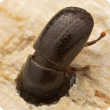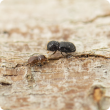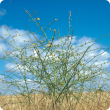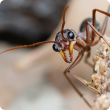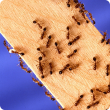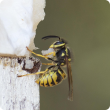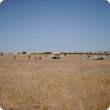Pests, weeds & diseases
Pests, weeds and diseases pose a serious risk for primary producers as they can impact on market access and agricultural production.
To reduce the impact of pests, weeds and diseases, the Department of Primary Industries and Regional Development:
- works with landholders, grower groups, community groups and biosecurity groups.
- provides diagnostic services and information on prevention, management and treatment.
- provides biosecurity and quarantine measures to prevent introduction, and to eradicate or manage current pests.
For advice on pests, weeds and diseases search our website, the Western Australian Organism List or contact our Pest and Disease Information Service (PaDIS).
For diagnostic services, please contact our Diagnostic Laboratory Services.
Filter by search
Filter by topic
- Biosecurity & quarantine (36) Apply Biosecurity & quarantine filter
- Biosecurity (36) Apply Biosecurity filter
- (-) Remove Invasive species filter Invasive species
- Pests (21) Apply Pests filter
- Weeds (14) Apply Weeds filter
- Pest animals (12) Apply Pest animals filter
- Declared plants (11) Apply Declared plants filter
- Pest insects (9) Apply Pest insects filter
- Control methods (9) Apply Control methods filter
- Livestock & animals (6) Apply Livestock & animals filter
- Chemicals (5) Apply Chemicals filter
- Livestock management (5) Apply Livestock management filter
- Baits & poisons (5) Apply Baits & poisons filter
- Pest mammals (4) Apply Pest mammals filter
- Birds (4) Apply Birds filter
- Plant biosecurity (3) Apply Plant biosecurity filter
- Mechanical, physical and cultural (3) Apply Mechanical, physical and cultural filter
- Diseases (3) Apply Diseases filter
- 1080 (3) Apply 1080 filter
- Sheep (2) Apply Sheep filter
- State Barrier Fence (2) Apply State Barrier Fence filter
- Livestock species (2) Apply Livestock species filter
- Strychnine (2) Apply Strychnine filter
- Livestock biosecurity (2) Apply Livestock biosecurity filter
- Beef cattle (2) Apply Beef cattle filter
- Fungi (2) Apply Fungi filter
- Quarantine (1) Apply Quarantine filter
- Weeds of National Significance (1) Apply Weeds of National Significance filter
- Management & reproduction (1) Apply Management & reproduction filter
- Emergency response (1) Apply Emergency response filter
- Amphibians and reptiles (1) Apply Amphibians and reptiles filter
- European house borer (1) Apply European house borer filter
- Intrastate movement (1) Apply Intrastate movement filter



